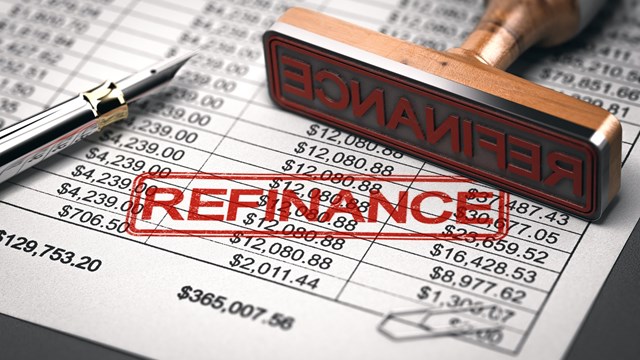Here in New York, where real estate values have risen to unprecedented levels, limited equity co-ops created under the Mitchell-Lama program are presented with the choice of either embracing their own dizzying market value by removing the restrictions imposed by the program and converting to free-market housing or remaining limited equity where both purchase and sale prices are limited to several thousand dollars a room. So how is the buy-out issue affecting cooperatives? Are they rushing to claim their share of the windfall? What are the economics of their situation? Is it even ethical to be reducing the stock of affordable housing at a time when no new affordable housing is being created?
A Short History of Affordable Housing
Ethnic and union groups were the first to develop affordable cooperatives for their members in the ’20s and ’30s. During the Depression, 75 percent of these housing efforts folded, though some, such as Amalgamated Housing in the Bronx, managed to survive. Others were built later; Penn South, a complex of ten buildings between 23rd and 29th streets and Eighth and Ninth Avenues in Manhattan, was put up by the International Ladies Garment Workers Union in 1962.
Hundreds of affordable cooperatives across the country were made possible in the ’50s and ’60s by Section 213 of the Housing Act of 1950. Albert F. Pennisi, president of the Federation of New York Housing Cooperatives and a partner at the law firm of Pennisi, Daniels, & Morelli in Rego Park, Queens, says that Section 213 housing was probably the forerunner of the Mitchell-Lama program. He explains that the Federal Housing Administration (FHA) guaranteed the mortgages granted by banks, and pursuant to that guarantee, the banks granted mortgages well below then-current interest rates, some at as low as three-and-a-half to four percent. The FHA regulated these cooperatives that did not receive any tax abatements; however, the low mortgage rates created what in effect was affordable housing. When the mortgages–usually 40-year loans–were paid off, they became free-market co-ops with no controls by any governmental agency. Pennisi says that the nationwide program was so successful they very rarely had any foreclosures. Because most of them have paid off their mortgages, there are only two-dozen or so such co-ops left.
In 1955, the Mitchell-Lama housing program–which has since become known as the most successful affordable housing program ever–was created in New York State. The program took its name from its legislative sponsors, former Manhattan State Senator MacNeil Mitchell and former Brooklyn Assemblyman Alfred Lama. James Garst, a member of the current board of the Mitchell-Lama Council, reports that a total of 422 Mitchell-Lama developments, representing about 150,000 apartments were built in New York State under the program. Of these developments, 102–representing more than 67,000 units–were co-ops.
The Mitchell-Lama program granted low-interest mortgages and property tax exemptions in exchange for limitations on profits for developers, income limits for tenants, and state supervision for everybody involved. Buildings were allowed to buy out of the Mitchell-Lama program after 20 years; all such housing is well past that mark today. But, as buildings such as Columbus Park on the Upper West Side of Manhattan found out when it tried to convert, there may be binding time restrictions beyond the initial 20 years. Garst says that there may be a restrictive covenant in the land disposition agreement. "Many of the Mitchell-Lamas were built on land acquired under the federal Title I program. In its day it provided that the federal government could acquire land by eminent domain and then deed it over to the city at a significant write-down, which is one of the subsidy elements which enabled Mitchell-Lama to be brought in as moderate-income." The agreement required the development to stay in the program for a fixed number of years, which varies from building to building; for Columbus Park, it was 40 years.
"There’s one other time bar that applies on a case-by-case basis," says Garst. "HPD [Department of Housing Preservation and Development] has made available low-interest loans for capital improvements under what is called the Article 8A loan programs. Where they have done that, they have required the co-op to remain in the program for the life of the loan. Again, those loans are of varying lengths. That’s another restriction which has kept the co-ops from buying out."
Since Mitchell-Lama, there have been no new middle-income housing programs in New York City. All of these programs put limits on both the purchase and re-sale prices of apartments at usually a few thousand dollars a unit–way below the market value.
Yes, But Is It Right?
As of a year ago, 56 developments had bought out of Mitchell-Lama. Only one of them was a co-op. That was the Contello I in Brooklyn, and the buy-out was back in the ’80s. Other limited equity buildings are now making the choice as well. Cooperative Village, four union-built complexes on Grand Street, went market a year ago. Penn South voted to remain limited equity. What is keeping eligible co-ops from joining the stampede?
A number of factors come into play to explain the issues surrounding co-op conversion or reconstitution to market value apartments. When it comes to co-ops, philosophical questions often play a big part. Gregory J. Carlson, executive director of the Federation of New York Housing Cooperatives, says, "Some may argue keeping with the cooperative spirit; some people want to be true to the social aspect of a cooperative." Along the same lines, Ed Yaker, vice chairman of the Coordinating Council of Cooperatives and president of Amalgamated Housing, says, "The drawbacks to reconstitution are that the housing would no longer be affordable the kind of people it was built for. It would change the tone and tenor of the co-op, and there are many people who for moral and philosophical reasons believe the co-op should remain what it was created for. It was created with a purpose, and just being here at the time that they happened to convert is no justification for someone to get a windfall."
Interestingly, similar issues were not raised when hundreds of thousands of apartments protected and subsidized by rent control and rent stabilization, were converted to co-ops where the tenants purchased at 50 percent or more discounts based on the leverage created by their below-market rents. Rent control and stabilization create tax-payer subsidies as they suppress the value of real estate; lowering real estate taxes on one property while forcing others to share the tax burden disproportionately. Rent control and stabilization programs were created with affordable housing as their goals as well.
In the ongoing buyout debate, the very word "subsidy" has come under scrutiny. Yaker says, "You mean "’government supervised’ co-ops. Some of us bristle at the word ‘subsidized’ since basically what we’ve gotten is some tax-abatements. When Donald Trump gets tax abatements, or NBC gets tax abatements, they don’t call it ‘subsidized businesses,’ so I see no reason certain housing to be called ‘subsidized.’"
Regardless of the classification, questions have been raised over whether it’s right for people to make huge profits on property subsidized by taxpayers. Moreover, is it ethical to do that if it means diminishing the amount of affordable housing in a city already caught on the horns of a serious housing crisis? What about the fact that many cooperators settled "frontier" neighborhoods, investing in their communities and helping bring about today’s higher market values? Shouldn’t they reap the rewards?
"Everybody went into this arrangement knowing it was a limited subsidy period," says Jack Freund, executive vice president of the Rent Stabilization Association (RSA), "I think it’s a problem that’s endemic to any type of subsidized housing program. When you provide a subsidy, it’s usually for a term, whether it’s by reducing interest on a mortgage, or providing a rental assistance contract for a certain period of time. So you know when that expires, something is going to have to happen. I don’t think it takes a lot of foresight to see that, given generally inflationary trends, rents are going to be higher 20 years from now, and that should have been evident 20 years ago."
Yaker concurs–but only to a point. "In one sense, government made a contract, and if you look at it from the co-op’s perspective, hey, we honored the contract, we stayed [limited] equity for this number of years, contract’s over. My argument would be, if government had continued to assist the development of housing for working class people then a) no one would care, and b) there wouldn’t be a "windfall" because there’d be places for people to move into. So I think it’s really a failure of government to provide the housing opportunities that they were providing during, say, the heyday of the Mitchell-Lama program. There are very strong arguments to be made, but the fact is, government made a contract with the housing, whether it was private developers or co-ops, and that contract period has ended."
That said, Yaker’s own personal preference would be that housing created for people of moderate means be left to benefit those of similar economic circumstances in the future.
The Bottom-Line Effect
Stuart Saft, chairman of the Council of New York Cooperatives and Condominiums (CNYC) and an attorney with Wolf Haldenstein Adler Freeman & Herz in Manhattan, has worked with several limited equity co-op boards considering buying out, and finds that it all comes down to economics. "Each time we do the economic analysis on behalf of one of these boards, we come up with the fact that if they buy out, the housing no longer becomes affordable. Because you do the analysis and you see, okay you have to pay off the mortage, which means you have to go in and get regular financing, and then you have to pay real real estate taxes rather than the pilot or the otherwise reduced real estate taxes, and the net effect of that is that the carrying charges, the maintenance, has to go up significantly. So those–and it’s frequently seniors–who are on fixed incomes, can’t afford to pay the monthly maintenance after the property is bought out. Basically they either have to borrow money against their equity to maintain the apartment or sell the apartment, because they can’t afford it any longer. For those who are looking for a way of generating cash and moving away, for instance down to Florida or North Carolina, this gives them the ability to do so." The math is simple: How much is an increase in maintenance worth? How creative a plan can be developed to minimize the impact to those who cannot afford it? The stakes are high.
The bottom line is that feasibility of a conversion hinges on the value of the apartments. The incentives to convert rise proportionately with the market value of the apartments. Within these buildings debates are fierce. As apartment values continue to rise–as they will in the long term–more and more of the Mitchell Lama co-ops will confront both the social and economic implications of converting to market value housing.
Ms. Goodman is a freelance writer living in Westchester.







10 Comments
Leave a Comment